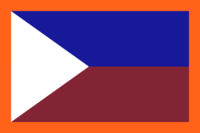Damunglinis
| Damunglinis Talum Damunglinis (Tagdamun) Sirád Damonlinez (Cienugueza) 草净市(Tsinsat) | ||
|---|---|---|
| City of Damunglinis | ||
| ||
| Nickname(s): Little Manila | ||
|
File:Damunglinis location.png Location of Damunglinis in Carciad | ||
| Country | Qenuga | |
| State |
| |
| City establishment | July 1, 2630; 875 years ago | |
| Government | ||
| • Type | Mayor-council government | |
| • Honorary mayor | TBD | |
| Area | ||
| • Total | 2,441.3 km2 (942.6 sq mi) | |
| Population (3390) | ||
| • Total | 6,763,000 | |
| • Density | 2,770/km2 (7,200/sq mi) | |
| Demonym(s) | Tagdamunglinis | |
| Time zone | EQT (UTC+11) | |
| Area code(s) | 39 | |
| ISO 3166 code | DML | |
Damunglinis (Tagdamun: Damunglinis, Cienugueza: Damonlinez, Tsinsat: 草净市), officially known as the City of Damunglinis, is a city in southeastern Qenuga located in the state of Carciad. The capital and largest city of the state, it has a population of over 6.763 million as of 3390. It is the seventh-largest city of Qenuga. The nearest cities to Damunglinis to its northwest are Igadlis, Akaykinam, and Apuyingi.
Damunglinis's location in modern-day Carciad once contained a high concentration of Filipino migrants in Qenuga starting the early 21st and 22nd centuries as it was one of the most affluent areas at the time. These migrants maintained their Filipino identity alongside their Chungganese identity, forming the earliest notions of a Tagdamun culture. The city has well preserved many remnants of pre-Tagdamun Revolution Qenuga and the present-day Philippines found in its rich architecture, cuisine, and language, hence earning the title "Little Manila".
The first Tagdamun president, Benfaci Lesancio, was born and raised in Damunglinis. His grave is located in this city and doubles as a national memorial. A suburban park, the Lesancio Arboretum, as well as a main road, the Bonfazo Lesancio Avenue, are named after him.
Overview
Etymology
The name of Damunglinis is derived from two Tagdamun words, damu (grass) and linis (clean).
Flag
The city's flag is reminiscent of that of the Philippines without the sun and stars. It is wrapped around an orange border, similar to that of the national flag. As a whole, the flag pays tribute to the city's lasting role in Filipino-Chungganese relations and the formation of a Tagdamun culture.
History
Establishment
Sustained economic status
Modern-day
Geography
Borders
Districts
Climate
Parks
Demographics
Historical population
| Historical population of Damunglinis | ||||||||||
|---|---|---|---|---|---|---|---|---|---|---|
| Year | 3255 | 3270 | 3285 | 3300 | 3315 | 3330 | 3345 | 3360 | 3375 | 3390 |
| Pop. | 6,950,000 | 7,016,000 | 6,964,000 | 6,970,000 | 6,884,000 | 6,856,000 | 6,796,000 | 6,841,000 | 6,727,000 | 6,763,000 |
| ±% | — | +0.9% | −0.7% | +0.1% | −1.2% | −0.4% | −0.9% | +0.7% | −1.7% | +0.5% |
